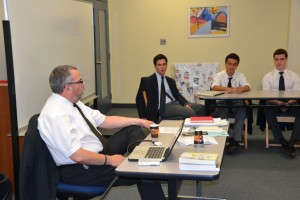“Une journée. Deux cents projets. Mille personnes. Et vous, que voulez-vous changer à Montréal?”
That was a tweet from someone last Monday morning at Je Vois Montreal – a private citizens’ forum focused on incubating ideas to get our city back on track to truly flourish. I am actually old enough to remember the excitement around the introduction of the Montreal subway system, Expo 67, and welcoming the world to the 1976 summer Olympics. During those years, creativity, possibility, and excitement flourished here in Montreal – and it’s possible again.
However, after the election of our first separatist government in the fall of 1976, followed by the sovereignty referendums of 1980 and1995, Montreal experienced a host of significant political and economic challenges. This included diminished private investment and the flight of people and company head offices to cities such as Toronto, Calgary, and Vancouver. In practice, this has proven to be difficult to overcome. Also, aging infrastructure has presented a host of challenges to our city – and to all of us in our daily lives.
The Je Vois Montreal – I See Montreal initiative was started when Jacques Ménard, president of the BMO Financial Group in Quebec and Chancellor of Concordia University, was inspired by learning how other cities facing similar issues have managed to change in recent years.
Ménard & others commissioned a private consultant report on how cities like Manchester (UK), Melbourne (Australia), Philadelphia (USA), and Pittsburgh (USA) all shared a high level of community involvement that helped those urban centres to shift direction and get back on track after challenging times. Each took different steps to achieve meaningful renewal.
Je Vois MTL was trending on Twitter last Monday. Hundreds of Montreal citizens, politicians, educators, self-pronounced change-makers and newsmakers gathered at Place des Arts for the full day to discuss the future of this city and share ideas for its revitalization.
They wanted to rise above the negative energy of the Charbonneau Commission, economic decline, and the Parti Québecois’ proposed “Charter of Secular Values” which together have combined to keep investment away in recent years. The positive response to this citizen forum initiative has actually been well beyond anyone’s expectations.
Hundreds of ideas from Montrealers flooded in when the challenge was sent out earlier this year. Last week conference delegates discussed 150 of those ideas, each one a plan for concrete action. The ideas cover many areas of city life, including: the environment, transit, job-creation, neighbourhood renewal, and the arts.
For example, some contributors noted that Montreal is a major university city. With about 170-thousand post-secondary students, this represents the largest number of students in any city in Canada. With CEGEP students in the mix, Montreal has the largest proportion of post-secondary students as a percentage of the total population of any city in North America.
Concordia has taken a lead amongst universities with six specific proposals from students & administration: They include:
1) Univers-Cité – A stronger alliance of universities focused on collaboration, research and the nurturing of people, talent and skill.
2) International Student Hospitality Project – Special welcome and cultural integration of international students, and a
3) Unique First Nations education project in Kanawake.
Other initiatives have a special artistic focus such as the proposed “Festival of Murals” on Blvd. St Laurent (like Philly – where over 3000 colourful painted murals adorn walls of buildings in what used to be a tired and worn out inner city).
So as Montrealers, I think our LCC students should have some input into this call for creativity and citizen input. From what I can tell, there has not been any high school level contribution.
This week I challenged our students to come up with concrete ideas and funnel them through our student council. In the next two weeks I would like to see the LCC ideas in writing and submit them to the “Je Vois Montreal” group.
I look forward to seeing how creative and original our students can be. I urge them to be positive and take ownership because the future of Montreal should be important to us all. – Chris Shannon, Headmaster

![photo[5]](http://wearelcc.ca/wp-content/uploads/2013/11/photo5-300x200.jpg)

